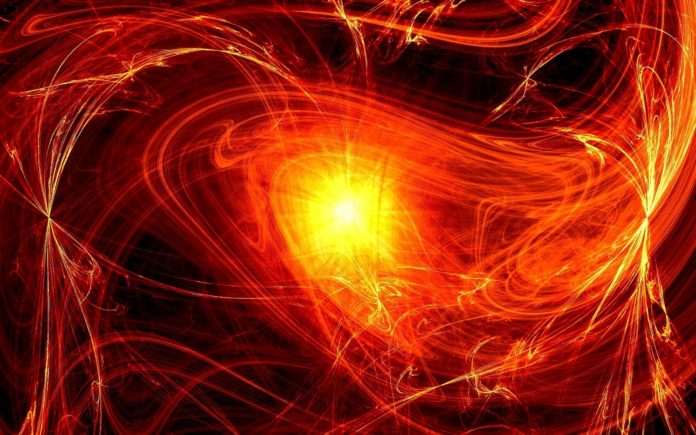Tokamaks are the name for the doughnut-shaped facilities where nuclear fusion takes place, and one of the main problems to get over for next-generation fusion reactors is the possibility of the impact of the Alfven eigenmodes that ripple through them. When heated to temperatures close to 100 million degrees Celsius, deuterium and tritium react and produce alpha particles as a result.
These high-energy helium ions are what heats the plasma and sustain the fusion reactions. Because these alpha particles are much hotter than the fuel and are bursting with energy, they have the ability to drive those Alfven eigenmodes out of the reaction chamber before they have a chance to heat the plasma. If scientists can better understand these waves and their role in helping alpha particles escape, they’ll be one step closer to achieving a more stable fusion reactor.
We already know that if just one or two waves are excited within the reaction chamber the alpha particles’ ability to heat fuel becomes limited. However, the idea is that if lots of these waves are excited together they can expel many alpha particles, putting the reactor chamber walls at risk as well as the efficient heating of the fuel. These ideas have been confirmed recently at the DIII-D National Fusion Facility in San Diego. In these experiments, losses of up to 40 percent have been observed as Alfven waves become excited in the reactor.
Following this research, others at the DOE’s Princeton Plasma Physics Laboratory (PPPL) conducted their own research. As part of their study, they created a model of the impact of the Alfven waves on high-energy deuterium beams. The model predicted accurately that as much as 40 percent of the energetic particles would be lost.
“Our team confirmed that we can quantitatively predict the conditions where fusion alpha particles can be lost from the plasma based on the results obtained from the modeling of the DII-D experiments,” stated Gerrit Kramer, lead author of the paper and a PPPL research physicist. It’s a huge leap forward in regards to understanding these excited waves and how they “work together to expel energetic particles from the plasma”, said Raffi Nazikian, head of the ITER and Tokamaks Department at PPPL. The model also suggested that some plasma conditions could reduce the amount of Alfven waves and as a result lower a number of energetic-particles lost.
Further experiments focused on reducing energetic particle losses will be carried out in a new research campaign on DIII-D. “New upgrades to the DII-D facility will allow for the exploration of improved plasma conditions”, explained Nazikian. “New experiments are proposed to access conditions predicted by the theory to reduce energetic particle losses, with important implications for the optimal design of future reactors.”
More News to Read
- Researcher Discovered a New Way of Eco-Friendly Disposal for Data Security and Healthcare
- NASA’s Ocean Observation Reveals Sea-Level Fingerprints
- Chinese Scientists Create Device That Converts Blood Flow Energy into Electricity
- Researchers Revealed a New Clinically Tested Drugs that Inhibits the Growth of Tumours
- What Do You Think About Clothes that Grow With Your Child?

